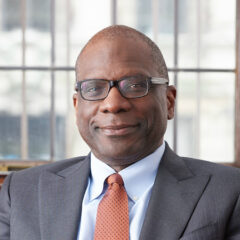Telltale greenhouse gases could signal alien activity
Detecting intelligent life that’s light years away
IMAGE:
ARTIST'S CONCEPT OF AN EXOPLANET IN THE PROCESS OF BEING TERRAFORMED.
view moreCREDIT: THIBAUT ROGER/UNIVERSITY OF BERN
If aliens modified a planet in their solar system to make it warmer, we’d be able to tell. A new UC Riverside study identifies the artificial greenhouse gases that would be giveaways of a terraformed planet.
A terraformed planet has been artificially made hospitable for life. The gases described in the study would be detectable even at relatively low concentrations in the atmospheres of planets outside our solar system using existing technology. This could include the James Webb Space Telescope, or a future European-led space telescope concept.
And while such pollutant gases must be controlled on Earth to prevent harmful climate effects, there are reasons they might be used intentionally on an exoplanet.
“For us, these gases are bad because we don’t want to increase warming. But they’d be good for a civilization that perhaps wanted to forestall an impending ice age or terraform an otherwise-uninhabitable planet in their system, as humans have proposed for Mars,” said UCR astrobiologist and lead study author Edward Schwieterman.
Since these gases are not known to occur in significant quantities in nature, they must be manufactured. Finding them, therefore, would be a sign of intelligent, technology-using life forms. Such signs are called technosignatures.
The five gases proposed by the researchers are used on Earth in industrial applications such as making computer chips. They include fluorinated versions of methane, ethane, and propane, along with gases made of nitrogen and fluorine or sulfur and fluorine. A new Astrophysical Journal paper details their merits as terraforming gases.
One advantage is that they are incredibly effective greenhouse gases. Sulfur hexafluoride, for example, has 23,500 times the warming power of carbon dioxide. A relatively small amount could heat a freezing planet to the point where liquid water could persist on its surface.
Another advantage of the proposed gases — at least from an alien point of view — is that they are exceptionally long-lived and would persist in an Earth-like atmosphere for up to 50,000 years. “They wouldn’t need to be replenished too often for a hospitable climate to be maintained,” Schwieterman said.
Others have proposed refrigerant chemicals, like CFCs, as technosignature gases because they are almost exclusively artificial and visible in Earth’s atmosphere. However, CFCs may not be advantageous because they destroy the ozone layer, unlike the fully fluorinated gases discussed in the new paper, which are chemically inert.
“If another civilization had an oxygen-rich atmosphere, they’d also have an ozone layer they’d want to protect,” Schwieterman said. “CFCs would be broken apart in the ozone layer even as they catalyzed its destruction.”
As they’re more easily broken apart, CFCs are also short-lived, making them harder to detect.
Finally, the fluorinated gases have to absorb infrared radiation to have an impact on the climate. That absorption produces a corresponding infrared signature that could be detectable with space-based telescopes. With current or planned technology, scientists could detect these chemicals in certain nearby exoplanetary systems.
“With an atmosphere like Earth’s, only one out of every million molecules could be one of these gases, and it would be potentially detectable,” Schwieterman said. “That gas concentration would also be sufficient to modify the climate.”
To arrive at this calculation, the researchers simulated a planet in the TRAPPIST-1 system, about 40 light-years away from Earth. They chose this system, which contains seven known rocky planets, because it is one of the most studied planetary systems aside from our own. It is also a realistic target for existing space-based telescopes to examine.
The group also considered the European LIFE mission’s ability to detect the fluorinated gases. The LIFE mission would be able to directly image planets using infrared light, allowing it to target more exoplanets than the Webb telescope, which looks at planets as they pass in front of their stars.
This work was done in collaboration with Daniel Angerhausen at Swiss Federal Institute of Technology/PlanetS, and with researchers at NASA’s Goddard Space Flight Center, the Blue Marble Space Institute of Science, and Paris University.
While the researchers cannot quantify the likelihood of finding these gases in the near future, they are confident that — if they are present — it is entirely possible to detect them during currently planned missions to characterize planetary atmospheres.
“You wouldn’t need extra effort to look for these technosignatures, if your telescope is already characterizing the planet for other reasons,” said Schwieterman. “And it would be jaw-droppingly amazing to find them.”
Other members of the research team echo not only enthusiasm for the potential of finding signs of intelligent life, but also for how much closer current technology has brought us to that goal.
“Our thought experiment shows how powerful our next-generation telescopes will be. We are the first generation in history that has the technology to systematically look for life and intelligence in our galactic neighborhood,” added Angerhausen.

The return capsule of the Chang'e-6 probe lands in Siziwang Banner, north China's Inner Mongolia Autonomous Region, on Tuesday.The returner of the Chang'e-6 probe touched down on Earth on Tuesday, bringing back the world's first samples collected from the moon's far side.
June 25 (UPI) -- China's Chang'e-6 mission successfully returned to Earth early Tuesday, bringing with it the first-ever samples retrieved from the far side of the moon.
The Chang'e-6 return capsule successfully landed in the Siziwang Banner area of China's Inner Mongolia Autonomous Region at 2:07 p.m. local time, the China National Space Administration said in a statement.
"This marks the complete success of the Chang'e-6 mission of the lunar exploration program, achieving the world's first sample return from the far side of the moon," it said.
With the touchdown ends Chang'e-6's nearly two-month mission to space.
The probe consisting of an orbiter, lander, ascender and returner launched May 3 from China with a final destination of the far side of the moon, where it landed June 2.
Though only on the moon's surface for a few days days, the probe collected samples from a crater known as the Pole-Aitken basin before departing the lunar surface on June 4 for home.
At about 1:20 p.m. Tuesday, the return capsule successfully separated from the orbiter at an altitude of approximately 3,106 miles above the south Atlantic Ocean and entered the Earth's atmosphere about 20 minutes later.
According to the space agency, the capsule then "bounced back" out of the atmosphere over the Indian Ocean as part of an "initial aerodynamic deceleration" before re-entering the atmosphere when he performed a second deceleration maneuver.
When about 12 miles above ground the capsule moved to parachute deployment, which occurred as it was 6 miles from landing.
Prior to landing Tuesday, the space agency sent out a press release announcing Chang'e-6's scheduled return, stating it was coming with "a precious 'gift' from the back of the moon."
President Xi Jinping has extended his congratulations on the success of the mission, state-owned Xinhua reported.
"The Chang'e-6 mission represents a significant milestone in the history of human lunar exploration, and it will contribute to a more comprehensive understanding of lunar evolution," Yang Wei, a researcher at the Institute of Geology and Geophysics of the Chinese Academy for Sciences, told the state-owned news agency in a separate report.
"New samples will inevitably lead to new discoveries."
China is the only nation to visit the far side of the moon, with Chang'e 6 being its second visit following the Chang'e 4 mission in 2019.
Agence France-Presse
June 25, 2024

This handout photo taken on June 3, 2024 and released on June 4, 2024 by the China National Space Administration (CNSA) shows the ascender and lander captured by China's Chang'e-6 lunar probe after it landed on the moon.
A Chinese probe carrying samples from the far side of the Moon returned to Earth on Tuesday, capping a technically complex 53-day mission heralded as a world first.
The landing module of the Chang'e-6 spacecraft touched down at a predetermined site in Inner Mongolia at 2:07 pm (0607 GMT), the China National Space Administration said, hailing the mission a "complete success".
It comes bearing soil and rocks from the side of the Moon facing away from Earth, a poorly understood region that scientists say holds great research promise because its rugged features are less smoothed over by ancient lava flows than the near side.
That means the materials harvested there may help us to better understand how the Moon formed and how it has evolved over time.
China's space agency said the probe was "functioning normally, signaling that the Chang'e-6 lunar exploration mission was a complete success".
President Xi Jinping said in a congratulatory message that the "outstanding contributions" of the mission command "will be remembered forever by the motherland and the people", state broadcaster CCTV reported.
Chang'e-6 blasted off from a space centre on the island province of Hainan on May 3 and descended into the Moon's immense South Pole-Aitken Basin almost exactly a month later.
It used a drill and robotic arm to scoop up samples, snapped some shots of the pockmarked surface and planted a Chinese flag made from basalt in the grey soil.
On June 4, the probe made the first ever successful launch from the far side in what Xinhua called "an unprecedented feat in human lunar exploration history".
National pride, misinformation
China's burgeoning space exploits are a point of pride for the government, and state media outlets launched rolling coverage of the imminent landing on Tuesday morning.
Live images of the landing site showed workers approaching the landing capsule as several helicopters sat nearby on a broad patch of flat grassland.
One worker planted a Chinese flag next to the capsule, enthusiastically unfurling it into the wind.
Xinhua reported Monday that local farmers and animal herders had been evacuated from the area ahead of the touchdown.
"We hope that our country's space exploration will continue to advance and that our nation will become stronger," Uljii, a local herdsman, told Xinhua.
But the mission has also sparked a torrent of online misinformation, with some users of the Weibo social media platform seizing on the unfurling of the Chinese flag to push the false claim that Washington faked the Apollo Moon landings, AFP Fact Check found.
Space dream
Plans for China's "space dream" have shifted into high gear under Xi.
Beijing has poured huge resources into its space program over the past decade, targeting ambitious undertakings in an effort to catch up to traditional space powers the United States and Russia.
It has built a space station, landed robotic rovers on Mars and the Moon, and become only the third country to send astronauts into orbit.
But the United States has warned that China's space program masks military objectives and an effort to establish dominance in space.
China aims to send a crewed mission to the Moon by 2030 and plans to eventually build a base on the lunar surface.
The United States also plans to put astronauts back on the Moon by 2026 with its Artemis 3 mission.
(AFP)
U.S. to launch satellite to better prepare for space weather
Agence France-Presse
June 25, 2024 12:56PM ET

A SpaceX Falcon Heavy rocket is set to carry the Geostationary Operational Environmental Satellite U into orbit from Florida (Miguel J. Rodriguez Carrillo/AFP)
The United States is aiming Tuesday to launch a new satellite expected to significantly improve forecasts of solar flares and coronal mass ejections -- huge plasma bubbles that can crash into Earth, disrupting power grids and communications.
A SpaceX Falcon Heavy rocket is set to carry the satellite into orbit from NASA's Kennedy Space Center in Florida, though weather so far appears unfavorable for the two-hour launch window opening at 5:16 pm (2016 GMT).
The GOES-U (Geostationary Operational Environmental Satellite U) mission is a collaboration between the space agency NASA and the National Oceanic and Atmospheric Agency (NOAA).
It will be the fourth and final in the GOES-R series of satellites that have tracked hurricanes and tornadoes, monitored climate and sea surface temperature, air quality and even meteor detections since 2016.
Orbiting 22,236 miles (35,785 kilometers) above the equator, the satellites match the speed of Earth's rotation in order to hold their positions over specific regions and provide continuous coverage.
They "are an indispensable tool for protecting the United States and the one billion people who live and work in the Americas," Pam Sullivan, of NOAA said in a press conference.
GOES-U is the first of the four to include a coronagraph, called the Compact Coronagraph-1 (CCOR-1). Coronagraphs block the Sun's disk and allow observation of its outermost layer, called the corona.
"That allows us to observe large explosions off the sun, called coronal mass ejections that can hurtle billions of tons of matter at millions of miles per hour towards Earth," said Elsayed Talaat, in charge of space weather observations at NOAA.
The ejections, known as CMEs, can disrupt Earth's magnetic field, causing satellites, energy infrastructure, and navigation systems to go down. Collecting space weather data allows authorities to issue warnings one to four days in advance.
In early May, the planet experienced its first level 5 geomagnetic storm in two decades, the highest rating on the scale, which unleashed spectacular auroras worldwide.
With the new coronagraph, the speed and direction of this event could have been better understood from the start, said Talaat.
Major disruptions weren't felt, but some farmers "reported being unable to plant their crops because the precision GPS relied upon by their equipment had malfunctioned," he said.
For the first time, the United States will have a coronagraph observing the solar corona almost continuously, with the CCOR-1 taking readings every 30 minutes.
Currently, such observations are received with a delay of up to eight hours. They are carried out by a satellite launched in 1995, which should cease operating within two years.
"Once operational CCOR-1 will mark a new chapter in space weather observations," said Talaat.
"Although the sun is no more active than in previous generations, our society has changed, and we are more sensitive than ever to the sun's changing mood."
JUNE 24, 2024
A Naples, Fla., family has filed a lawsuit against NASA following an extraordinary incident on March 8, when debris from the International Space Station plummeted from the sky and smashed through their roof, causing significant damage while a family member was inside.
"They are grateful that no one sustained physical injuries from this incident, but a 'near miss' situation such as this could have been catastrophic," said Mica Nguyen Worthy, a partner of the law firm Cranfill Sumner LLP who is representing Alejandro Otero and his family. "My clients are seeking adequate compensation to account for the stress and impact that this event had on their lives."

An external pallet packed with old nickel-hydrogen batteries is pictured shortly after mission controllers in Houston commanded the Canadarm2 robotic arm to release it into space on March 11, 2021.
The space junk was originally a 5,800-pound pallet containing old batteries that were discarded from the International Space Station on March 11, 2021. Shortly after, NASA said the object would "orbit Earth between two to four years before burning up harmlessly in the atmosphere."
Nearly three years to the date, it entered Earth's atmosphere, and a piece of debris survived the fiery descent, eventually crashing into the Florida house.
NASA analyzed the debris and confirmed it was part of the space junk released from the ISS in March 2021.
The object was a fraction of its original size, measuring just 4 inches long and weighing 1.6 pounds, but was big enough to smash a large hole in the roof and damage the house.

Recovered stanchion from the NASA flight support equipment used to mount International Space Station batteries on a cargo pallet. The stanchion survived re-entry through Earth&rsquos atmosphere on March 8, 2024, and impacted a home in Naples, Florida.
NASA said an investigation is underway to determine how the debris survived the journey through Earth's atmosphere and will work to mitigate the risk in the future-something that has become a bigger issue recently.
"Space debris is a real and serious issue because of the increase in space traffic in recent years," Worthy said. NASA has six months to respond to the claims.

Image of the International Space Station taken on July 10, 2011. A spacewalk was canceled at the ISS on Monday. \
June 24 (UPI) -- NASA canceled a spacewalk for the second time this month on Monday after reporting a coolant leak on the umbilical unit on one of the astronaut's spacesuits.
Astronaut Tracy Caldwell Dyson reported the leak on the suit's servicing and cooling umbilical unit, or SCU, just before she and Mike Barratt were set to walk outside the International Space Station at about 8:52 a.m., EDT. Both astronauts had already turned on the internal power to their suits for what had been expected to be a 6.5-hour spacewalk.
NASA said Dyson and Barrat had opened the hatch to the space station's Quest airlock before reporting the water-leakage issue.
"The crew is working with ground controllers to repressurize the crew lock section of the airlock before returning inside the station's equipment lock," NASA said in its blog.
The astronauts returned inside the main space station in about an hour.
"I could see the ice crystals were flowing out there, and then, just like a snow machine, there was ice forming at that port on the SCU," Dyson told NASA's mission control, according to Space.com.
Astronauts Butch Wilmore added on the NASA livestream,"It was a pretty impressive snowstorm."
On June 13, NASA called off a spacewalk with Dyson and astronaut Mike Dominick when one of them experienced discomfort. NASA did not say which astronaut experienced the discomfort or give details about the issue.
The astronauts on that walk had expected to scrape microorganisms from the outside of the ISS to study for the possible origins of life.
By Ehren Wynder

Boeing Starliner astronauts Butch Wilmore and Suni Williams have stayed aboard the International Space Station nearly two weeks longer than scheduled, but they haven't overstayed their welcome. NASA Screengrab/UPI | License Photo
June 22 (UPI) -- After numerous delays, NASA said Friday that the Starliner crew would return to Earth in July
The agency said in a blog post that it delayed Starliner's Tuesday departure from the International Space Station so it doesn't conflict with a series of planned ISS spacewalks.
The extra time also would afford Starliner astronauts Barry "Butch" Wilmore and Sunita "Suni" Williams more time to review the spacecraft's propulsions systems, according to the agency.
Wilmore and Williams have been on board the ISS for almost three weeks. The two were set to complete a full assessment of the spacecraft while docked to the ISS in less than a week, but mechanical issues and the need to collect more data lengthened their stay.
The astronauts, however, are no strangers to delays. Boeing's first crewed Starliner test flight finally got off the ground on June 5 after concerns such as helium system leaks pushed back the launch date multiple times.
"We are taking our time and following our standard mission management team process," said NASA Commercial Crew Program Manager Steve Stich. "We are letting the data drive our decision making relative to managing the small helium system leaks and thruster performance we observed during rendezvous and docking.
Stich added that, given the duration of the mission, NASA will complete an agency-level review of the mission. NASA said it will share the details on the review at a later media briefing.
Wilmore and Williams are not overstaying their welcome, as there are plenty of supplies on board, and the ISS's schedule is fairly open through mid-August. The two also have contributed to regular station maintenance, scientific research and spacewalks .
"The crew's feedback has been overwhelmingly positive, and they know that every bit of learning we do on the Crew Flight Test will improve and sharpen our experience for future crews," said Mark Nappi, Boeing vice president and Starliner program manager.
Mission managers are considering the dates for future return missions to the ISS after two planned space walks on Monday and July 2.
If all goes well, Boeing will have completed its first successful crewed mission for NASA, but the company has a long way to go to catch up with competitor and fellow NASA contractor SpaceX, which so far has completed 13 crewed missions.
SpaceX, meanwhile has back-to-back Starlink satellite launches set for 1:15 p.m. in Florida and 11:45 p.m. EDT Sunday in California. The former launch from Florida was delayed after a T-0 abort on June 14.






